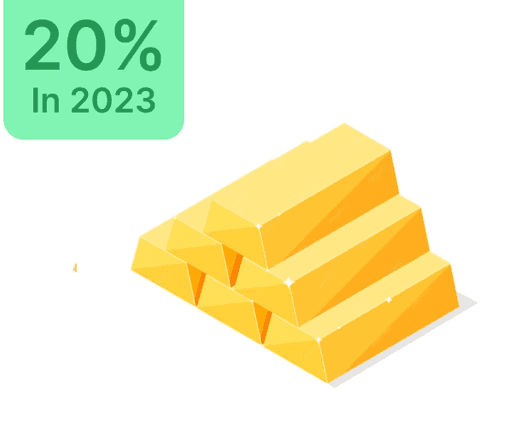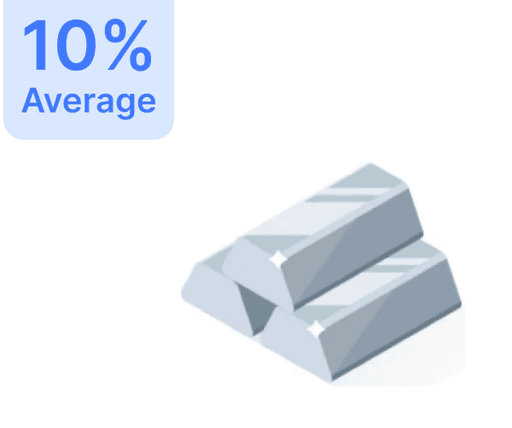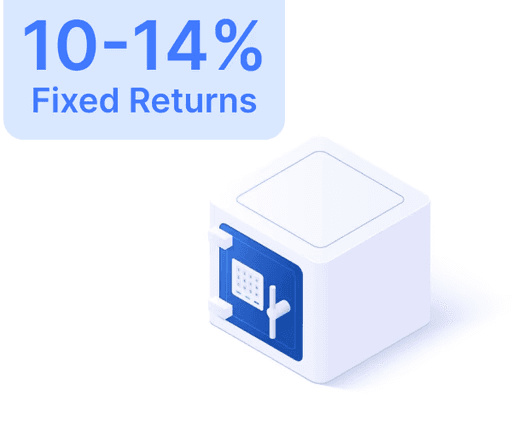
What Are the Top 10 Commercial Banks in India Today?

 Feb 14, 2024
Feb 14, 2024 15 Mins
15 MinsIntroduction
Banks are a vital component of any nation's economy, significantly contributing to its growth and financial development. In India, the Reserve Bank of India Act of 1934 categorizes major banks as commercial entities. These include microfinance institutions, payment banks, and cooperative banks within the planned banking framework. Commercial banks, regulated by the Banking Regulation Act of 1949, further divide into public sector, private sector, foreign, local, and regional banks. They are authorized to carry out financial activities like accepting deposits and offering credit to individuals, businesses, and the government. These banks provide diverse services, such as loans, savings accounts, and overdraft facilities, with revenue primarily derived from interest on customer loans, including business, automotive, real estate, and personal loans.
Commercial banks rely on customer deposits, utilized as capital for lending, crucial for market stimulation, credit availability, and financial liquidity. Although initially centered in urban areas, technology now enables their reach beyond geographical limitations.
History of Commercial Banks in India
India's commercial banking history is longstanding, with some banks having over a century of presence and extensive branch networks. Post-independence, commercial banks in India evolved through three phases. Between 1955 and 1970, the public sector surged with the National Bank of India, leading to 1969's nationalization of 14 major banks.
In the 1970s and 80s, banks transitioned from class to mass banking, broadening branch networks and focusing on priority sectors, especially aiding underprivileged demographics. Post-nationalization faced challenges like inadequate staff training, productivity decline, rising non-performing loans (NPLs), and increased capital demand for regulatory compliance. This led to policy shifts in 1991, encouraging a new economic approach. The M. Narasimham-led Financial Sector Committee proposed measures to enhance banks' efficiency, productivity, and profitability.
Categories of Commercial Banks
Private Banks:
Predominantly owned by individuals and businesses, private banks like HDFC Bank, ICICI Bank, and Yes Bank control the majority share capital.Public Banks:
Here, the government holds the major share. Notable examples are State Bank of India (SBI), Bank of Baroda (BoB), and Punjab National Bank (PNB).Foreign Banks:
Originating from other countries, they establish branches in India, e.g., American Express, HSBC, and Citibank.
Commercial Banks' Operations
Commercial banks perform primary functions of accepting deposits and extending loans, alongside secondary services like overdrafts and safe deposit lockers. These banks act as key financial entities for the public and small businesses, generating revenue from services and interest charges on loans. Customer deposits fund their lending, and banks typically offer lower interest rates on deposits compared to higher rates on loans, e.g., 2% on savings accounts versus 4.8% on mortgages.
Strategically located for accessibility, these banks often feature ATMs and teller services. With technological advancements, most provide online banking, enabling remote financial management, including fund transfers, deposits, and bill payments.
Significance of Commercial Banks in India
Commercial banks are crucial to India’s economy, offering essential services, enhancing market liquidity, and fostering capital formation. They leverage customer deposits to provide loans, thereby creating credit and stimulating economic activity, leading to increased production, job opportunities, and consumer spending. Due to their pivotal role, they are strictly regulated by the central bank, which imposes reserve requirements to safeguard deposit withdrawals.
Home Loan Interest Rates Offered by Commercial Banks in India
Despite the RBI raising repo rates by 190 basis points from May 2022, the latter half of the year saw a rise in Indian mortgage rates, with banks adjusting home loan rates. As of October 5, 2022, competitive home loan rates are offered by:
- Central Bank of India: 7.50%
- Union Bank of India: 7.75%
- Canara Bank: 7.80%
- Panjab National Bank: 7.90%
- Bank of Baroda: 7.95%
- Axis Bank: 8.10%
- State Bank of India: 8.15%
- Kotak Mahindra Bank: 8.49%
- HDFC: 8.60%
- ICICI Bank: 9.25%
Loan Analysis of Top 5 Commercial Banks in India
Union Bank of India:
Headquartered in Mumbai, it gained attention from the 2020 merger with Andhra Bank and Corporation Bank. It has over 9,300 branches and 11,800 ATMs.
- Maximum Term: 30 Years
- Processing Fee: 0.50% of Loan Amount up to Rs 15,000 + GST
- Scale of Affordability: High
- Advantages: No maximum mortgage amount. Cons: Fewer branches compared to some public lenders.
- Interest Rates:
- Home Loan: 8.50%
- Personal Loan: 10.4%
Kotak Mahindra Bank: Led by Uday Kotak, this bank is rapidly expanding in over 100 Indian cities, offering competitive mortgage rates.
- Longest Service: 30 Years
- Fees: Currently None (typically 0.5-1% of the loan amount)
- Scale of Affordability: High
- Benefits: Instant mortgage approval via Kotak Digi Home Loan Facility. Cons: Limited market penetration compared to government banks.
- Interest Rates:
- Personal Loan: 10.8 – 12%
- Business Loan: 15 – 16%
- Loan Against Property: 8.75 – 9.45%
- Home Loan: 6.95 – 7.75%
Bank of Baroda:
Originating in Vadodara and founded by the Maharajah of Baroda, it became India's third-largest bank post its merger with Dena Bank and Vijaya Bank.
- Interest Rates:
- Personal Loan: 9.76 – 11%
- Business Loan: 13.9 – 15%
- Loan Against Property: 8.2 – 9.5%
- Home Loan: 6.9 – 7.8%
- Maximum Duration: 30 Years
- Processing Fee: None
- Pros: Easy loan processing. Cons: Poor credit borrowers face higher costs.
Punjab National Bank (PNB):
PNB, the second-largest public sector bank, established in 1894, is headquartered in New Delhi. It serves over 8 crore customers across 764 cities.
- Interest Rates:
- Home Loan: 4 – 8.9%
- Personal Loan: 8.75 – 9%
- Maximum Holding Period: 30 Years
- Fees: None currently
- Scale of Affordability: High
- Pros: Temporary processing fee waivers for good credit borrowers
- Cons: Recent controversies and fraud may affect image.
State Bank of India (SBI):
SBI, India's largest mortgage lender, has aided over 30,000 homebuyers. Founded in 1955, it operates over 24,000 branches domestically and overseas, leading the mortgage segment with a Rs 5.5 trillion book size.
- Interest Rates:
- Personal Loan: 9.5 – 10.9%
- Home Loan: 7 – 8.5%
- Loan Against Property: 9.45 – 10.5%
- Business Loan: 11.05 – 12%
- Maximum Term: 30 Years
- Service Fee: 0.40% GST of the loan (min Rs 10,000, max Rs 30,000)
- Scale of Affordability: High
- Pros: Quick rate cuts following RBI's repo rate changes. Cons: Stringent documentation process.
List of Top 10 Commercial Banks in India
Choosing among India's commercial banks can be overwhelming. Here are the top 10:
State Bank of India (SBI)
India's largest commercial bank, with over 24,000 branches in India and 190+ worldwide, holds a major stake in loans and deposits.- Product Interest Rates
- SBI Personal Loan: 11.15%
- Home Loan: 8.40% - 10.05%
- Business Loan: 11.20%
- Loan Against Property: 10% - 11.55%
HDFC Bank:
A leading private sector bank with over 5,100 branches and market assets of over 11,89,432 crores, renowned for customer service.- Interest Rates:
- Personal Loan: 10.65%
- Home Loan: 8.50% - 9.15%
- Business Loan: 11.90%
- Loan Against Property: 9.50% - 11.00%
ICICI Bank:
Established in 1994, it is one of India's top 5 banks with over 4,800 branches domestically and operations in 17 international locations.- Interest Rates:
- Personal Loan: 10.50%
- Home Loan: 9.00% - 10.05%
- Loan Against Property: 10.85% - 12.50%
Kotak Mahindra Bank:
Founded in 2003, it's the second-largest private bank in India, with Rs. 2.14 trillion assets and 1,300 branches.- Interest Rates:
- Personal Loan: 10.50%
- Home Loan: 8.70%
- Loan Against Property: 9.15% - 10.50%
- Business Loan: 16.00%
Bank of Baroda:
Founded in 1908, it became the third-largest bank post its merger and now operates extensively across and outside India.- Interest Rates:
- Personal Loan: 10.10%
- Home Loan: 8.40% - 10.60%
- Loan Against Property: 10.85% - 16.50%
- Business Loan: 10.85%
Axis Bank
IndusInd Bank
Punjab National Bank (PNB)
Bank of India
Canara Bank
These top commercial banks play an integral role in India's economic development by providing a range of financial services and loans, aiding both individuals and businesses.
Conclusion
In conclusion, the top commercial banks in India are essential to the country's financial framework, offering comprehensive banking services and loan products tailored to diverse consumer needs. From SBI, the market leader, to HDFC Bank with its customer-centric innovations, these institutions bolster India’s economic growth. They facilitate banking account setups and extend various loans, including personal, home, and business loans, promoting consumption and investment. With vast branch networks, advanced digital infrastructure, and a focus on customer satisfaction, these top banks remain the cornerstone of India's financial progress and prosperity.
FAQs
What are commercial banks in India?
Commercial banks in India are financial institutions that offer a wide range of banking services to individuals and businesses, including deposit accounts, loans, and investment products.
How do I choose the best commercial bank in India?
Consider factors such as branch network, customer service, interest rates on loans and deposits, fees, and digital banking facilities to choose the bank that best suits your needs.
What types of loans do commercial banks offer?
Commercial banks in India offer various types of loans, including personal loans, home loans, business loans, and loans against property, each tailored to different financial needs.
What are the benefits of banking with top commercial banks in India?
Banking with top commercial banks provides access to a wide range of services, robust digital banking platforms, competitive interest rates, and extensive branch networks for convenience.
How do commercial banks contribute to India's economy?
Commercial banks play a crucial role in India's economic development by providing financial services, facilitating savings and investments, and supporting the growth of businesses and industries through lending.




